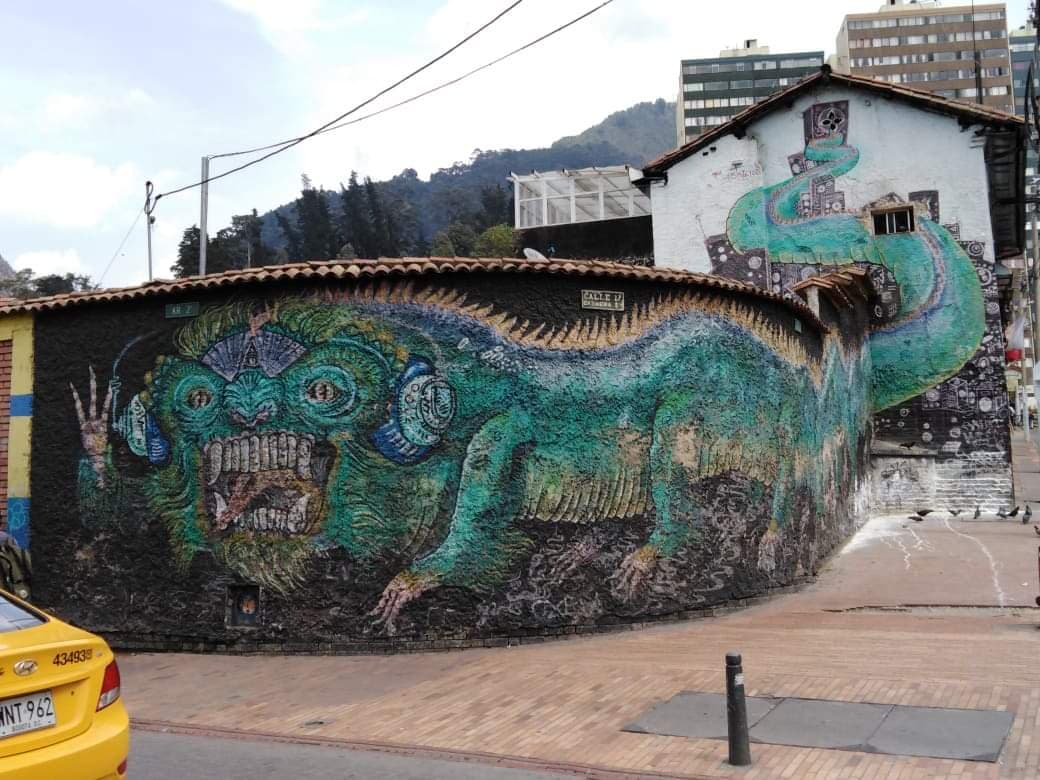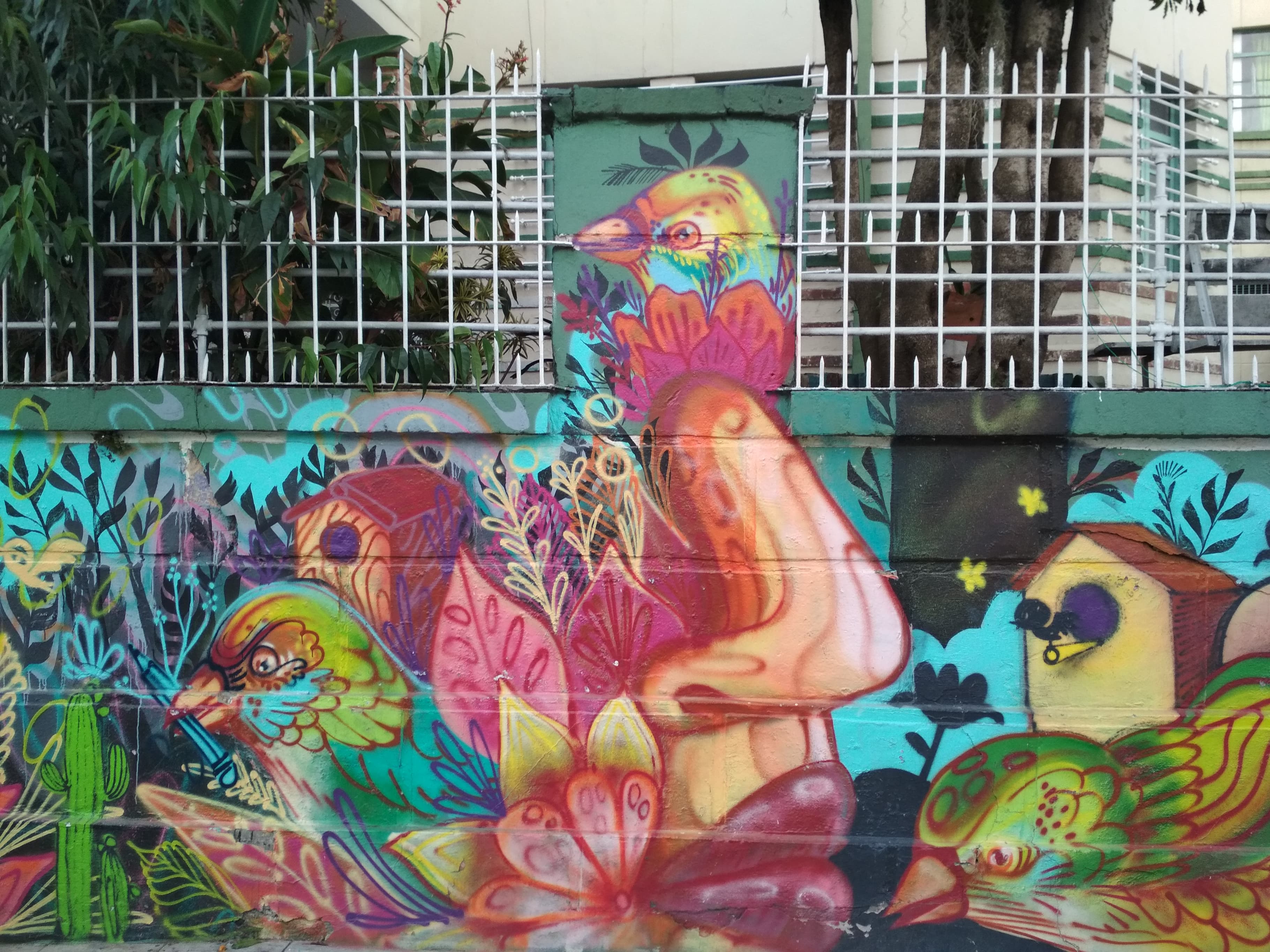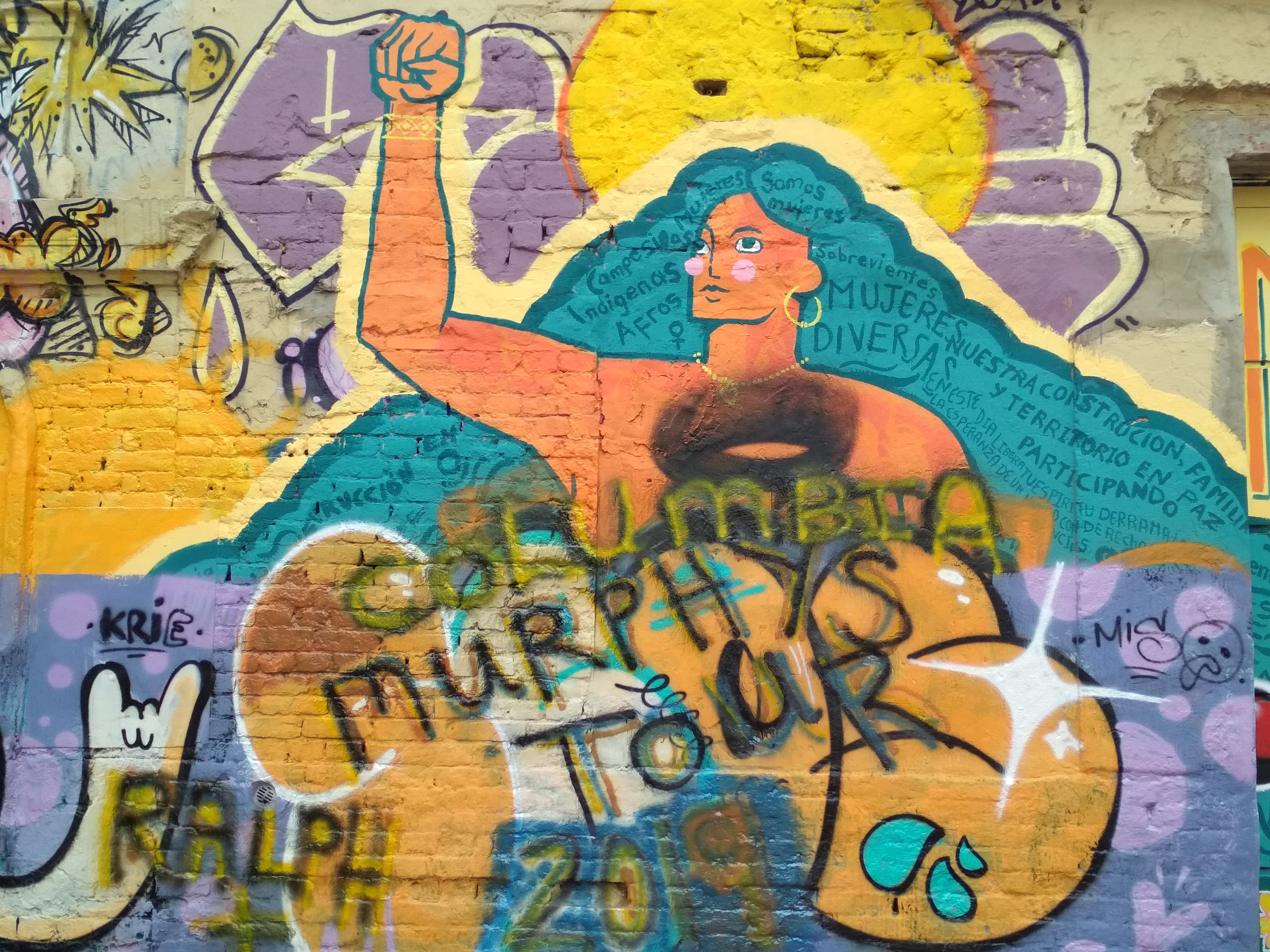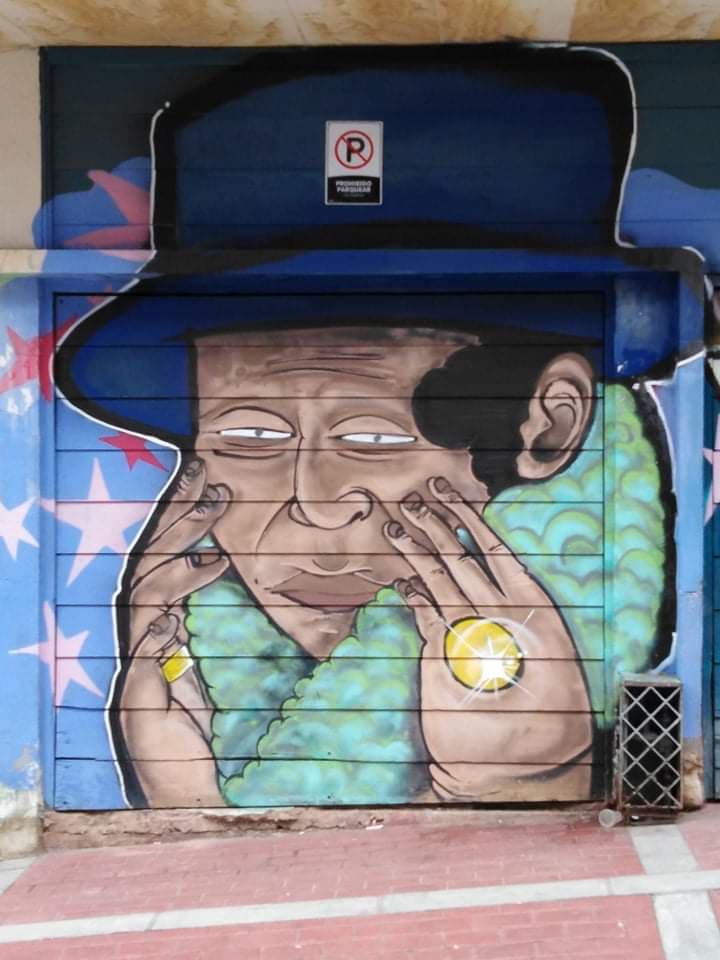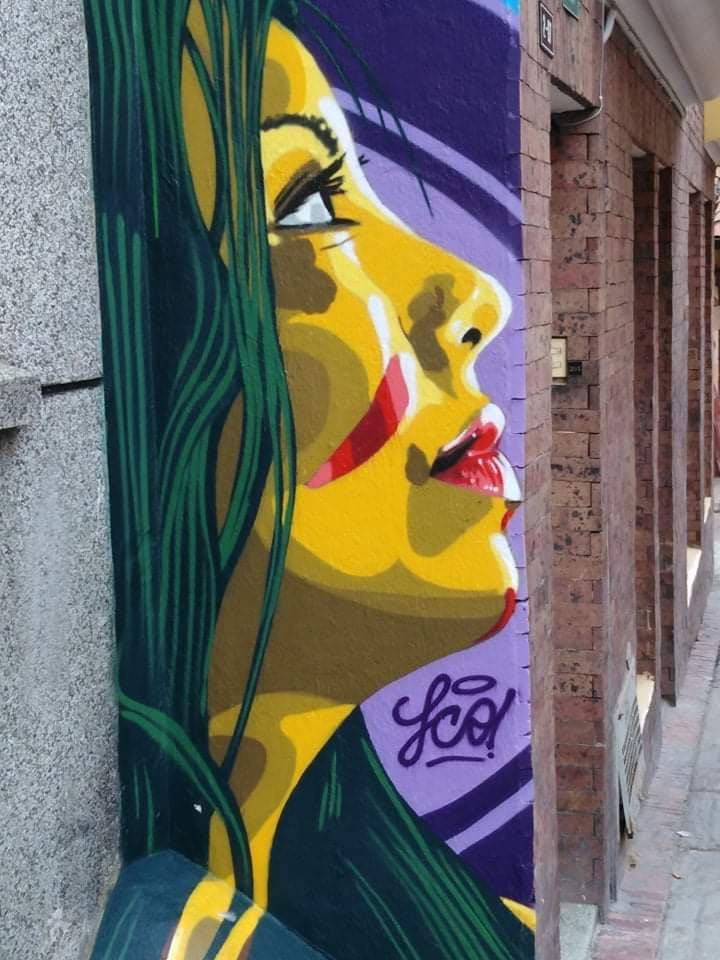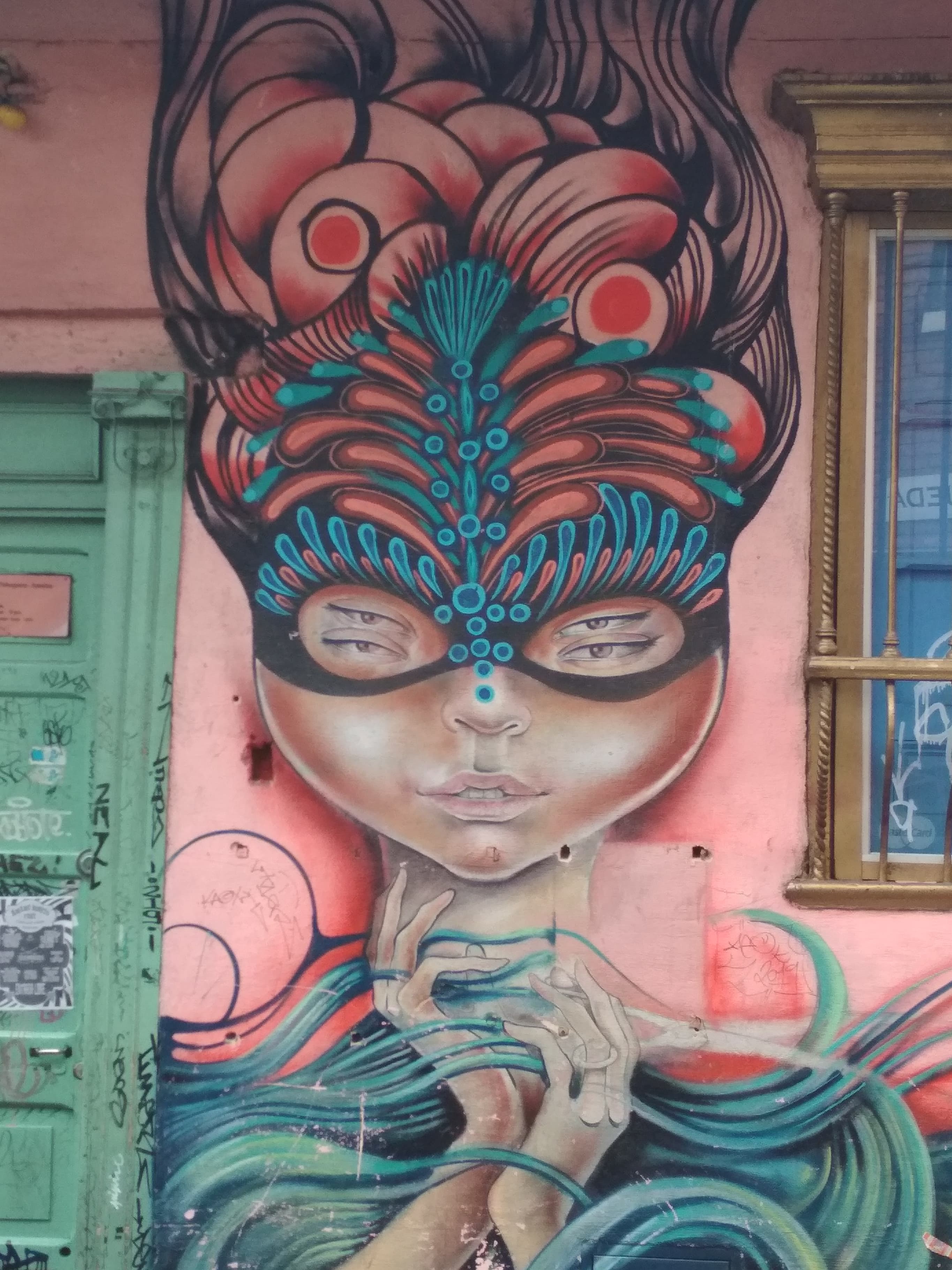Meditation & Street Art

During my recent trip to Bogotá, I discovered that the city is full of graffitis. Graffitis everywhere, and of all kinds, styles and sizes! They were sometimes covering up an entire facade, and some others "just" completing with harmony the architecture of a building. I also discovered that there is an actual "Bogota Graffiti Tour" with an actual website! The tour has been part of the Bogota’s graffiti scene since 2011. It seems to have become -and I quote them "a sort of urban experience; the goal is for people to leave the tour with a new way of seeing and understanding the city."
I started asking people around and doing some research, to understand why graffitis had filled the entire city like that.
I found out that in 2011, police had murdered the 16 year-old Diego Felipe Becerra while he was tagging his signature "Felix the Cat", massive protests erupted throughout the city. This massive public reaction was partly responsible for the government relenting and ultimately downgrading graffiti from crime to violation to where it is now -condoned. We should note that the United Nations Office for Human Rights have also condemned the killing, which most certainly must have influenced the authorities in their decision to legalise graffitis.
The city's graffitis are more than just beautiful, or impressive. They reflect the diversity of the Bogota's people as well as their tumultuous culture. They are a flagrant act of freedom and liberty of speech.
As you all know, I am practising "Expression through Arts". and continuously exploring new meditative techniques. I would have been blind not to see the relation between those graffitis and meditation.

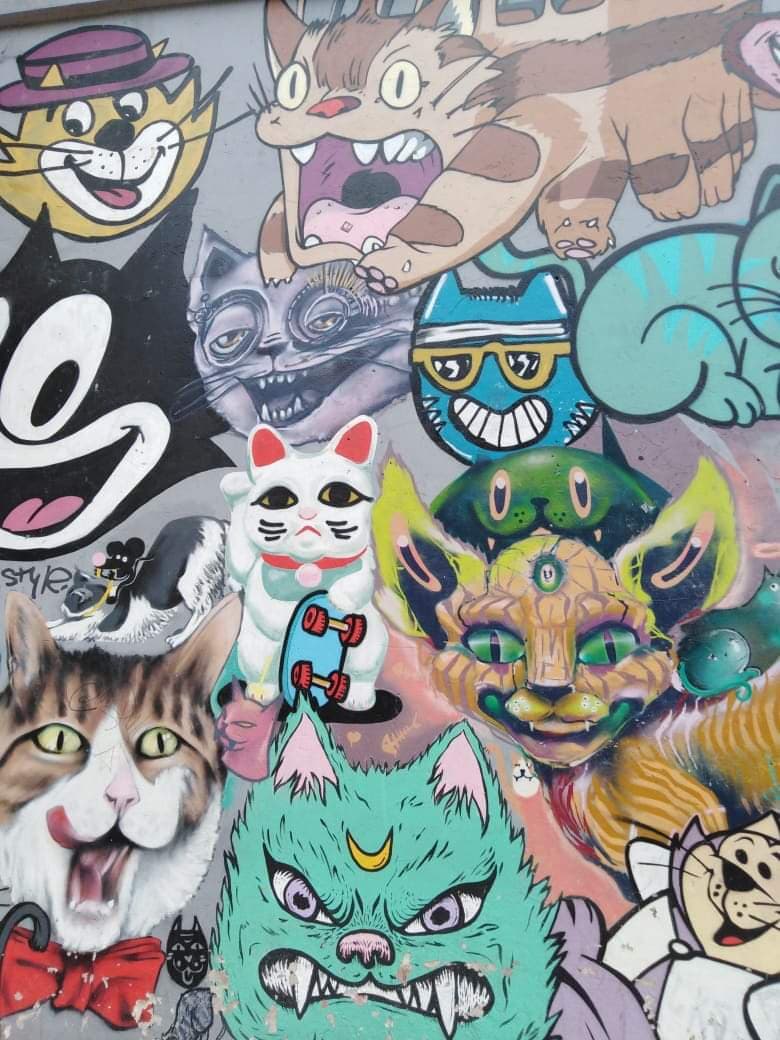
Why, and how?
If you are not familiar with "maṇḍala" (मण्डल), it is a Sanskrit word meaning circle, Even though it may be dominated by squares or triangles. They can also be found in parts Hindu Tantrism and in other traditions such as North American Indians' cultures.
Within the tradition of Tantric Buddhism, are sacred geometric figures that represent the Universe according to Vajrayana Buddhism. Usually Mandalas have complex geometrical shapes and it has become a generic term for any diagram, chart or geometric pattern that represents the cosmos metaphysically. However, for Tantric Buddhists, mandalas are rich with sacred meaning and symbolism.
In fact, the etymology of the word "Mandala" suggests not just a circle, but a "container of the essence”.
Often times mandalas are employed for focusing attention, as a spiritual teaching tool, and as an aid to meditation leading to certain trance. For instance the Tibetan branch of Vajrayana Buddhism, mandalas have been developed into sand painting.


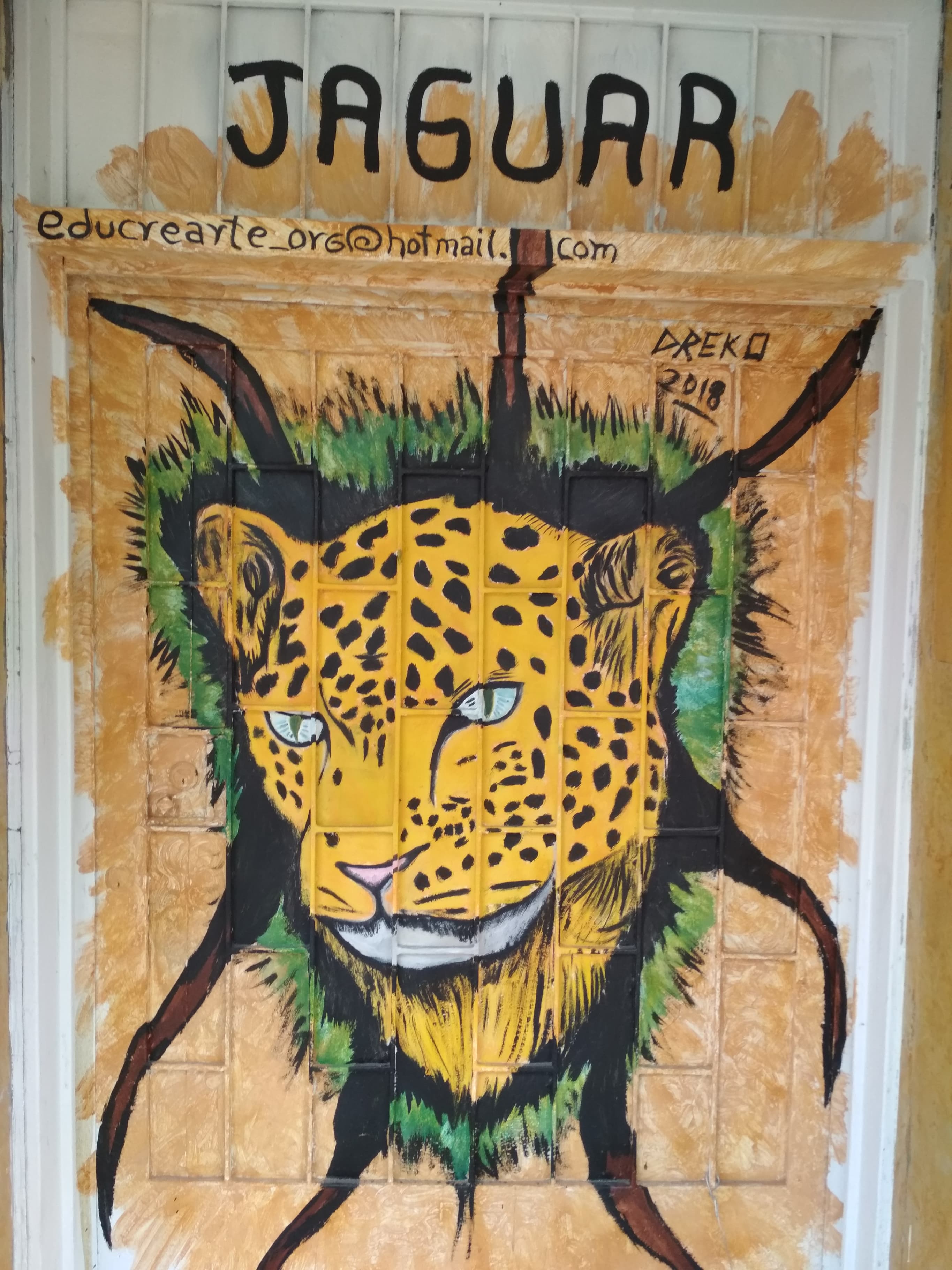
The creation process may take days or weeks, and the mandala is destroyed shortly after its completion: as a teaching tool and metaphor for the impermanence of all contingent phenomena and limited duration of life of basically everything.
Here comes the parallel with graffitis. The artists who paint them, dedicate a lot of time, love... essence! in order to do so. They manage by that expression to get rid of everything that is a burden to them, anything that they could not possibly express in any other way. But mainly, they take distance from all that at the same time when they deliver their graffiti(s) to the city. To the people. Freeing themselves from something. ANd offering their creations for as long as they may last, to Humanity.
On the other hand it is very rewarding for a street artist’s piece to be preserved fresh and in the graffiti artists communities it is a typical sign of disrespect to “cover” someone else’s piece (see for example the tragic #KingRobbo vs. #Banksy saga).
However, just like Buddhist monks -I finally realize- that graffiti artists live in the transience and impermanence of their work.
The very medium in which the art form was most notoriously celebrated – spray paint on trains – reflects the temporary nature and sense of “just passing through” that pervades the graffiti and street-art world: peeling paint, smudged stencils and flaking wheat-paste posters all follow the same trend.
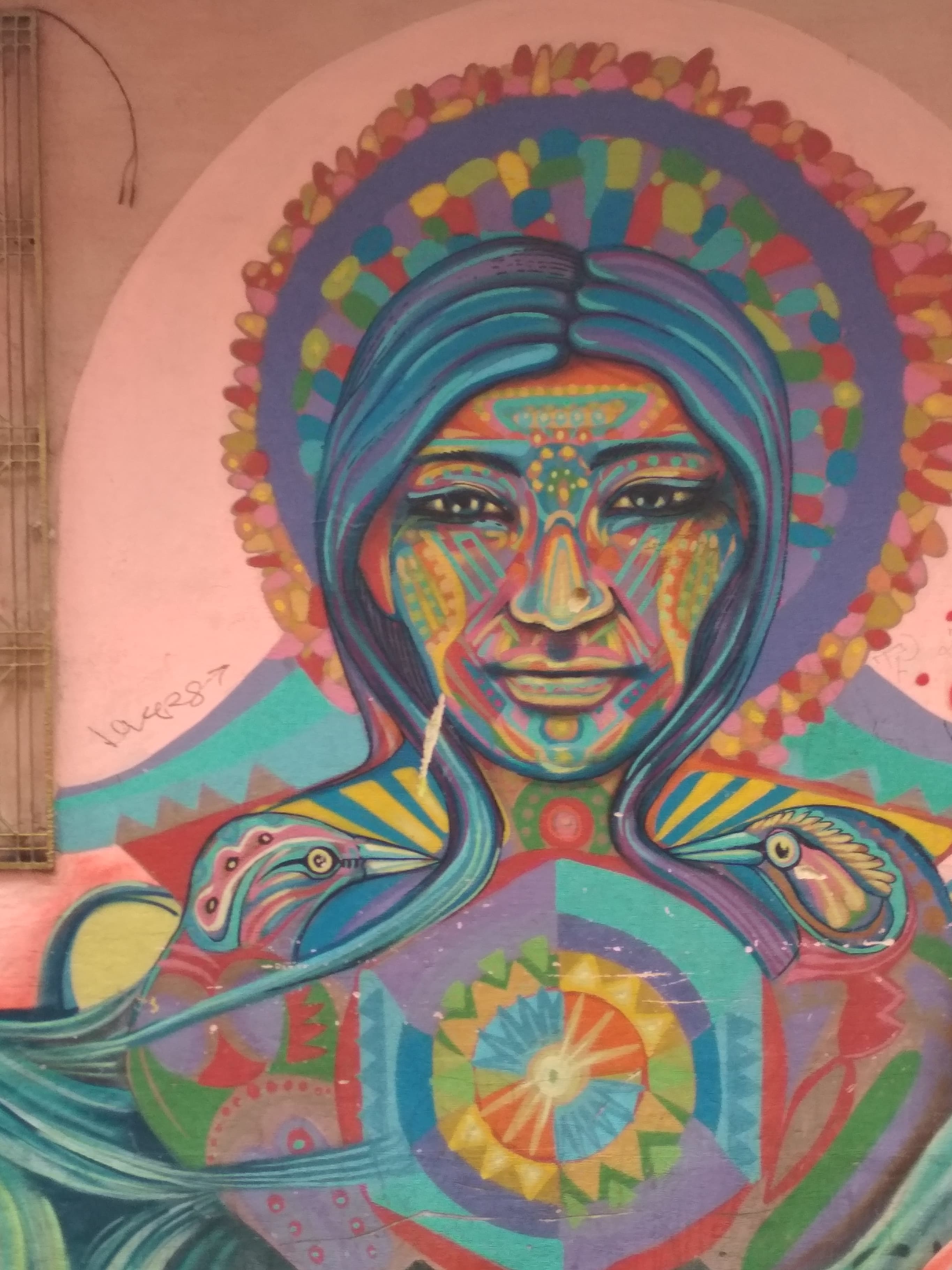
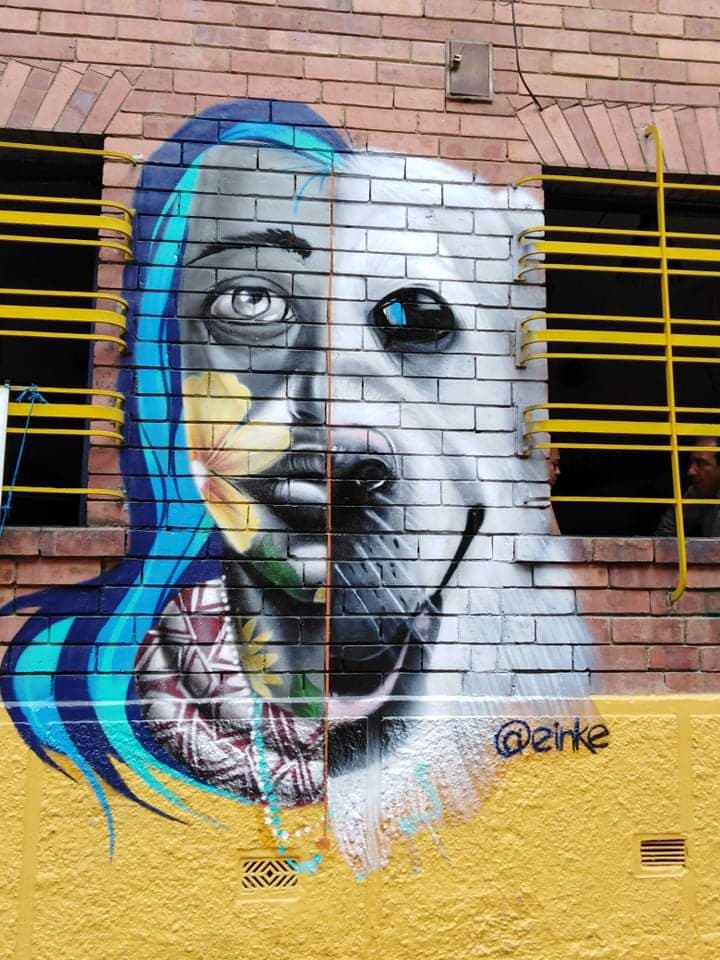

"There can be no doubt that the painting and repainting of the same section of wall-space also has a meditative quality. Not to mention the hours – if not years – of practice on lettering, sketches, fills, cutbacks; the stealthy sneaking around under cover of darkness, the planning, patience and meticulous skill that goes into executing an act of art that is in many places illegal.” [(Mindfuller.tumblr.com, 2019)]
To risk freedom, life, and limb for the pursuit of truth, free, public creative expression, has a somehow transcendental dimension. We can find the same dimension both in street art and meditation.
Graffiti is the making of marks, on the contrary meditation is a practice in which you induce a certain mode of consciousness.
Most certainly, graffitis allowed me to see Bogotá and Colombia in a different way. They vehiculate its cultural richness but at the same time make up for the negative political image due to all very well-known stories of drug cartels, paramilitaries, and violence.
One of the most vivid experiences I had in Bogota, is that I could not not engage with the street art!!! Which also is an act of meditation.
